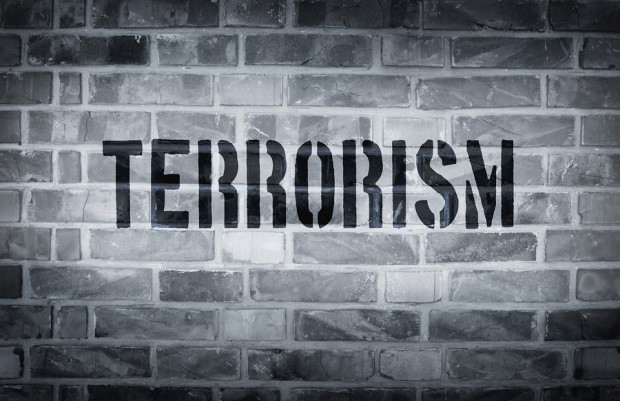 The re/insurance industry is failing to respond to the growing global terrorist threat with products that meet the needs of their clients, according to a report published by JLT Re and JLT Specialty Ltd.
The re/insurance industry is failing to respond to the growing global terrorist threat with products that meet the needs of their clients, according to a report published by JLT Re and JLT Specialty Ltd.
Indeed, evidence that insurance has absorbed only a fraction of the economic costs of recent terrorist attacks indicates the re/insurance sector has been slow to respond to the evolving terrorist risk – a situation that carriers must address quickly if they want to remain relevant to clients, said the report titled “Viewpoint Report – Rising to the New Terror Challenge.”
Recent terrorist events have highlighted “important gaps in coverage and opportunities for carriers to generate new business and premiums.”
The JLT report pointed to the example of the Paris attacks in November, which are expected to cost between $9 billion and $12 billion, although insured property losses are likely to be minimal, according to estimates from the Cambridge Centre for Risk Studies.
Since 2011, there has been a marked rise in global terrorist activity, which has coincided with a “stark spike in economic costs,” the report said, noting that losses from terrorism in 2014 exceeded those incurred in 2001 following the 9/11 attacks.
Part of the reason for the gap between losses and terrorism coverage is that traditional policies were designed “to protect against catastrophic terrorist events where property damage was a major loss component and business interruption was a direct consequence of the physical damage sustained during an attack,” said the report.
Evolving Threat
But the nature of the threat has changed over the past 25 years from vehicle-borne bombs in the 1990s, delivered typically by groups with domestic political agendas, to attacks carried out by Islamic extremists that focus “on crowded spaces in order to cause mass casualties,” the report said.
“While the marauding shootings in Paris represented [Islamic State’s] first major terrorist attack in the West, they were also a culmination of a strategic progression the group has been looking to achieve since early 2015,” the report said.
“Future potential attacks in Europe are likely to be assisted by the estimated 5,000 European Union citizens currently fighting in Syria and Iraq and the opportunities presented by the mass movement of people from both these countries to Europe,” said the report, which predicted more mass casualty attacks in 2016 and beyond.
“These evolving dynamics are coalescing to create new terror-related risks such as cyber security liabilities, impacts on people and damage to brand and reputation,” according to the report.
Reinventing Terror Re/Insurance Cover
Traditional terrorism policies responded to events when property damage was a significant loss component of an attack and business interruption was a direct consequence of the physical damage sustained, said the report.
However, the changing nature of attacks, which are focused on causing mass civilian casualties “present new challenges to re/insurers as they herald a new type of risk,” JLT noted.
Businesses require innovative re/insurance products that are relevant to their risk transfer needs and want their insurance partners “to plug the gaps in existing policies and to offer comprehensive protection against all relevant threats, including risks to people, damage to brand and reputation and malicious cyber attacks, or cyber terrorism,” JLT emphasized.
The report noted that recent attacks have demonstrated the need for broadened coverage around business interruption. “Through no fault of their own, some organizations have been left to foot business interruption costs at a time of difficulty and financial stress.”
The report cited the example of Boston in April 2014, when authorities cordoned off a 15 block area after two bombs exploded near the finish line of the city’s marathon. “Around 80 hours after the bombings, large parts of Boston were still under lockdown as the manhunt for the perpetrators reached its climax, causing financial damage to a number of businesses.”
The report explained that the lockdown of large urban areas during and after terrorist attacks is a costly characteristic of the terrorist risk. “While most large corporations are capable of absorbing such losses or mitigating the risk through effective business continuity management plans, the impacts on smaller enterprises and those in the hospitality or retail sectors can be, and have been, significant.”
While standard non-physical damage business interruption cover has been available through denial of access extensions, this was typically sub-limited and subject to a geographical limit of 250 meters, the report explained.
“Recent incidents have shown terrorism scenarios can cause lockdown implications well beyond these 250 meter zones, even in the event of no physical damage,” said the report, noting that a number of insurers have started to loosen these restrictions, which is being supported by some reinsurers.
The report suggested an optimal solution to bring clarity for clients would be for the standalone market to focus on protecting against a range of risks, creating new insurance products “that provide comprehensive protection against all risks, including property damage, CBRN [chemical, biological, radiological and nuclear], business interruption, impacts on people, non-physical damage business interruption, cyber (including cyber business interruption and cyber extortion) and damage to brand and reputation.”
However, JLT said no such solutions are currently available in the marketplace. Nevertheless, comprehensive cover can be achieved with the development of “holistic solutions”, or, in the short term, with a suite of products that plug existing gaps.
“Any long-term solution will realistically require the involvement of global terror pools as well as private risk carriers, with pools potentially taking on more systemic risks and the standalone market providing broadened coverage and new products to reflect the prevailing threat that exists today,” the report concluded.





















 Breaking: Andersen to Replace Zaffino as CEO of AIG on June 1
Breaking: Andersen to Replace Zaffino as CEO of AIG on June 1  Nearly Half of 100 Largest P/C Insurers Destroy Value: ACORD
Nearly Half of 100 Largest P/C Insurers Destroy Value: ACORD  What to Expect in 2026: U.S. P/C Results More Like 2024
What to Expect in 2026: U.S. P/C Results More Like 2024  Executives on the Move at Liberty Mutual, Cowbell, W. R. Berkley
Executives on the Move at Liberty Mutual, Cowbell, W. R. Berkley 









